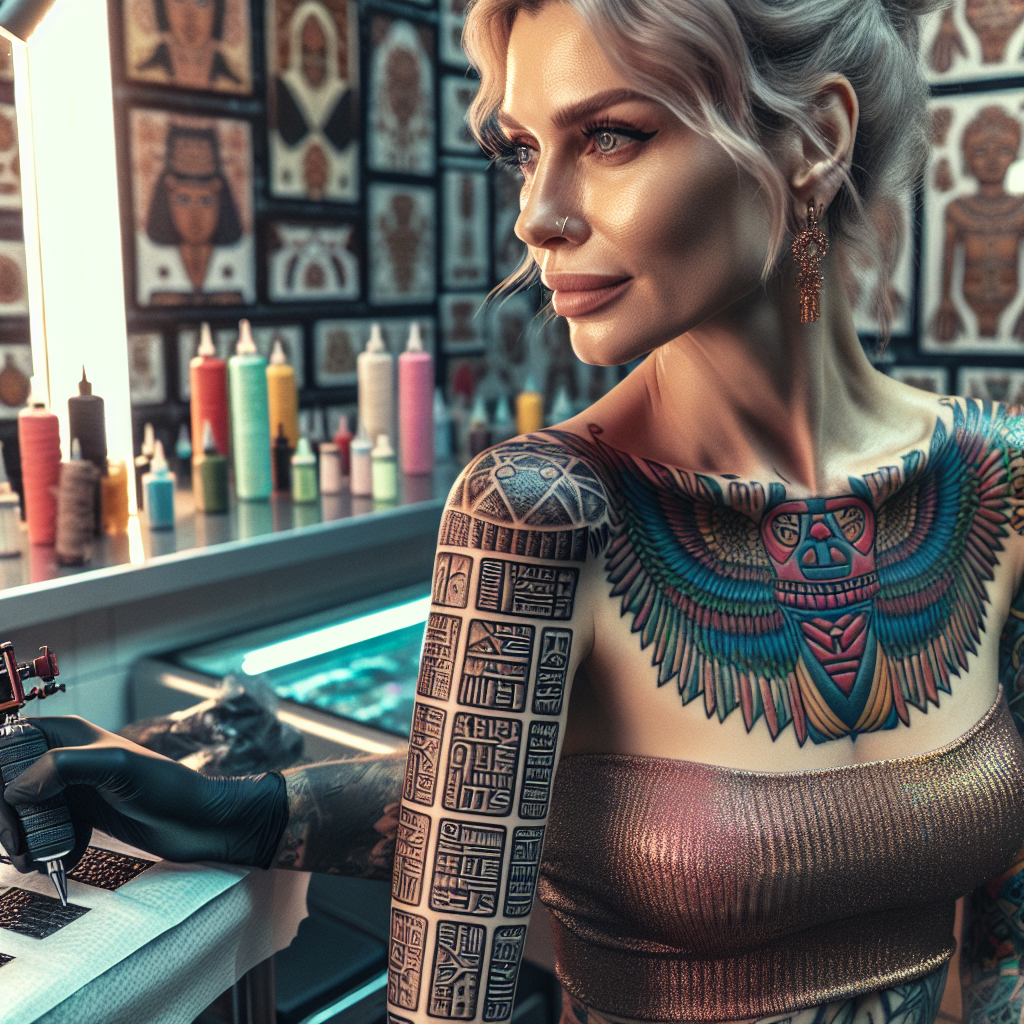
Get at least 6 FREE Stock Shares today
Title: Transforming Skin into History: The Joyful Impact of Cuneiform Shape Tattoos
In our ever-evolving world, personal expression continues to take fascinating new forms, imbuing our lives with color and meaning. Among those artforms, perhaps none is simultaneously as timeless yet progressive as tattooing. The recent blog post on “Scribing History: A Deep Dive into Cuneiform Shape Tattoos” throws light on a unique curiosity of the tattoo world, integrating ancient art into our modern skin stories while affecting your life positively.
Cuneiform writing is the earliest system of writing in human history. Developed by the ancient Sumerians around 3200 BC, the art of cuneiform scribing forms a significant part of Mesopotamian history and human civilization evolution. Now, that art has successfully melded with the dynamic world of tattooing, creating a unique niche in body art – cuneiform shape tattoos.
This interpretive, awe-inspiring art form has now become part of a growing tattoo trend, adding depth and historical significance to the traditional tattoo landscape. Not only have tattoos transitioned from the realm of taboo to mainstream acceptance, they’re now also becoming a symbol of empowerment, individualism, and life-affirming change.
In 2019, a research study published in the American Journal of Human Biology found that people with tattoos tend to have greater self-esteem than those without. This research indicates that in many ways, the act of getting a tattoo can be a form of self-discovery, a declaration of independence, or a tribute to personal resilience. Walking into a tattoo parlor, choosing a design, and bearing the children’s pain of the tattoo needle are all acts of self-determination, strength, and courage.
Cuneiform shape tattoos represent this celebration of self with an added layer – they provide a connection to our ancestral past. Wearing a piece of history on your skin can serve as a powerful reminder of human perseverance, progress, and the collective narrative we all share. Tattoos become, in this context, a way to connect to the larger human experience, immortalizing a shared story on individual bodies.
Moreover, by deliberately choosing to inscribe an ancient language on one’s skin, a tattoo becomes more than a simple adornment. It’s a choice to carry a symbol that speaks to deep histories, complex cultures, and vast human experiences – a constant reminder of the ties that bind us to our ancestors.
Interestingly, cuneiform is disjointed from modern linguistics, which provides another interesting perspective. The person wearing a cuneiform tattoo is not just sporting a mere design; they are inviting questions, discussions, and engaging in the process of education. This element of intrigue and curiosity can foster connections with others, stimulating conversations and potentially leading to deeper bonds.
Furthermore, the decision to get a tattoo often serves as a milestone or turning point in one’s life. The choice of design, placement, colors, and even pain is an external reflection of an inward journey.
A Harris Poll in 2012 found that 1 in 5 U.S. adults had at least one tattoo. The study revealed that 32% of these respondents claimed they feel more sexy after getting tattooed, while 29% said they feel more rebellious.
There’s no doubt then that tattoos, specifically those with historical significance like cuneiform, can have an affirming and positive impact on your sense of self. By choosing to indelibly mark your skin with an ancient script, you’re making a statement about who you are, where you resonate in our interconnected world, and making a purposeful connection with a time long passed.
Inked with history, cuneiform shape tattoos are not merely an art but an expression of self that transcends time. It embodies personal growth, affirms identity, and acts as a beacon of one’s journey – all while telling a story as old as written language itself. Undeniably, wearing a piece of history is more than skin-deep. It is all about creating a life that is profoundly meaningful, well-articulated, and positively impactful.
Leave a Reply